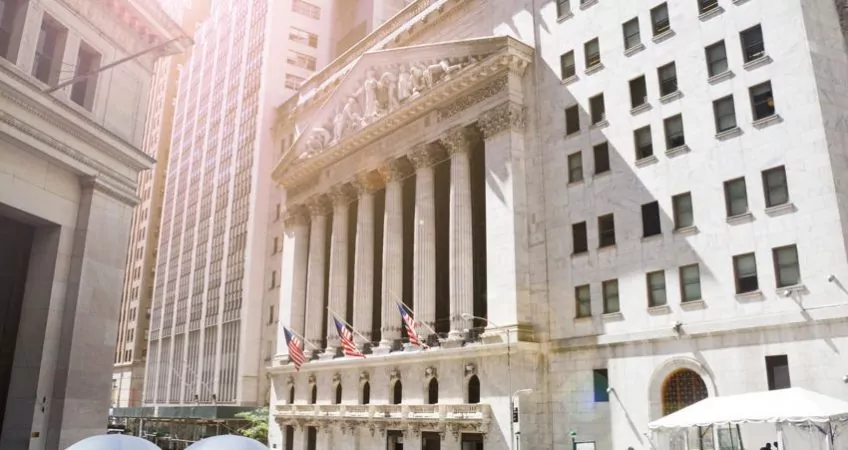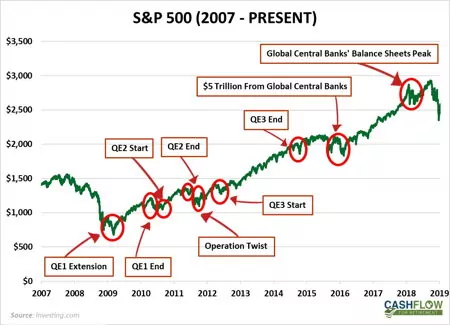
Why I’m Sensing Big Opportunities For Investors In 2020
What “QE4” Means For Global Investors—My #1 Prediction For 2020
Since the Great Recession, every major stock market move has come on the back of a central bank intervention.
In March 2009, markets bottomed out when the Federal Reserve announced the massive expansion of its QE1 (quantitative easing) program, and they reached their peaks in March 2010, when QE1 ended.
In August 2010, markets again reversed when the Fed began hinting about QE2, which it implemented less than three months later. The rally came to a halt in June 2011, when QE2 ended.
After a sharp fall in the markets, the Fed intervened again, first with Operation Twist late in 2011 and then with QE3 in September 2012.
And, again, markets dropped after QE3 ended in October 2014.
The latest rally came on the back of intervention not by the U.S. Fed but by global central banks, which in 2016 provided an extra US$5 trillion in global liquidity, the largest combined intervention effort in history. This propelled equities to 2018 highs. Central banks’ balance sheets peaked in early 2018, as, unsurprisingly, did global stock markets.
The United States managed another short bull run thanks to the December 2017 tax cuts, but this came to an abrupt halt in September 2018, when the Fed increased its quantitative tightening program. QT, the opposite of QE, removes liquidity from the market.
As you can see, there is a clear correlation. Every time central banks start pumping money into the economy, the stock market accelerates… and that’s exactly what’s happening now.
Looking Back From 2019 And Ahead To 2020
In 2019, the Fed stopped and reversed all the tightening programs.
First, the central bank cut interest rates by 75 basis points. Then, in mid-October, it silently launched a new QE (quantitative easing) program.
Which means that for the first time since the end of QE3 in 2014, the Fed is expanding its balance sheet.
The official stance is that they’re supporting the repo market (a form of short-term borrowing between financial institutions), not the economy, and that this is not QE4.
However, nobody believes them. If it looks like a duck and quacks like a duck…
I expect “QE4” to continue throughout 2020.
Moreover, I predict the Fed will keep interest rates unchanged. First, they’re effective at current levels, so there is no need to lower them. And second, Chairman Powell stated the Fed is willing to let inflation run loose for a while and won’t try to stop it with higher interest rates.
The combination of “QE4,” a low-interest-rate environment, improving U.S.-China relations, and a global economic recovery, creates a perfect cocktail for a continuing stock market rise in 2020.
I predict the S&P 500 index will reach 3,500 within the next six months without much resistance.
After that, I expect volatility to pick up as it becomes apparent the trade war situation is not over, and as the November election date draws near.
The best stocks to buy for 2020 will be those that performed the worst in the last two years.
I suggest you consider sectors like financial services, industrials, and energy. They all offer great value at these prices and should benefit from the current macroeconomic developments.
Leon Wilfan




